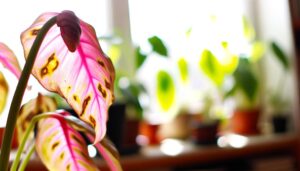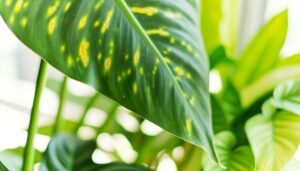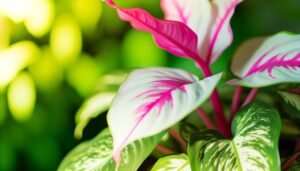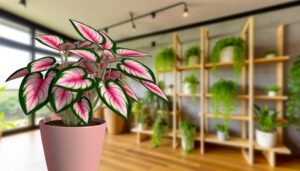Why Are My Philodendron Selloum Leaves Mushy?
Mushy leaves in Philodendron Selloum are primarily caused by overwatering, leading to root rot and impaired oxygen exchange. Pathogenic fungi such as Pythium, Phytophthora, and Rhizoctonia species thrive under anaerobic conditions fostered by poor drainage.
Insufficient light further exacerbates the problem by disrupting photosynthesis and weakening cellular integrity. Additionally, improper humidity levels and temperature fluctuations can stress plant physiology, resulting in leaf tissue degradation.
Addressing these environmental and cultural factors is pivotal for plant health. If you explore further, you will discover more about managing these conditions effectively.
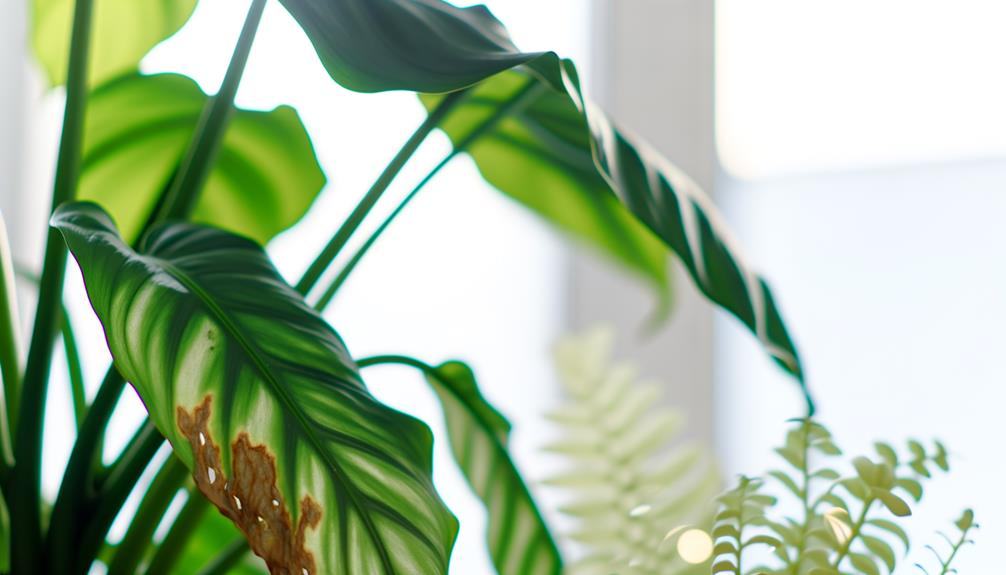
Key Takeaways
- Overwatering leads to root rot and mushy leaves due to impaired oxygen exchange and fungal growth.
- Poor drainage exacerbates root rot, causing mushy leaves by disrupting air and moisture balance.
- Pathogenic fungi or bacteria in moist soil cause root rot, resulting in yellowing leaves and mushy stems.
- Insufficient light disrupts photosynthesis, leading to decreased turgor pressure and mushy leaves.
- Temperature stress, especially extreme fluctuations, can cause leaf yellowing and wilting, contributing to mushy leaves.
Overwatering Issues
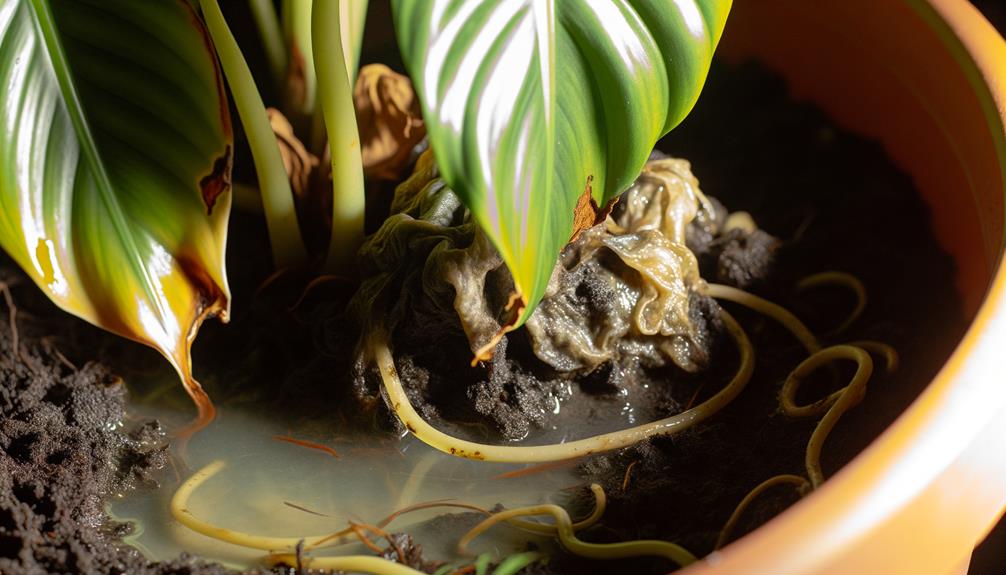
Overwatering is a primary cause of mushy leaves in Philodendron Selloum, leading to root rot and impaired oxygen exchange. Excessive water saturates the soil, creating anaerobic conditions detrimental to root health.
According to studies in plant physiology, prolonged exposure to waterlogged soil results in hypoxia, inhibiting root respiration and promoting pathogenic fungal growth (Smith et al., 2015). These pathogens, such as Pythium and Phytophthora, thrive in saturated environments, causing root decay (Jones, 1999).
This root damage disrupts nutrient and water uptake, manifesting in the plant's aerial parts as mushy, discolored leaves. Hence, precise irrigation management is essential; allowing the soil to dry slightly between waterings can prevent such conditions, ensuring ideal root function and overall plant health.
Poor Drainage
Inadequate soil drainage is another critical factor contributing to the development of mushy leaves in Philodendron Selloum, as it creates conditions that exacerbate root rot and impede proper oxygen flow to the roots. Poor drainage leads to waterlogged soil, which disrupts the delicate balance of air and moisture essential for peak root function. This anaerobic environment favors pathogenic microorganisms, further detrimental to plant health.
To ensure proper drainage, consider the following:
- Soil Composition: Use a well-aerated medium, such as a mix of peat, perlite, and pine bark, to facilitate water movement.
- Pot Selection: Choose pots with adequate drainage holes to prevent water accumulation.
- Watering Practices: Allow the soil to dry out between watering sessions to maintain appropriate moisture levels.
These steps mitigate poor drainage, thereby promoting healthier foliage.
Root Rot
Root rot, a common affliction in Philodendron Selloum, occurs when pathogenic fungi or bacteria proliferate in overly moist soil conditions, leading to the decomposition of root tissues. The pathogens responsible include Pythium, Phytophthora, and Rhizoctonia species, which thrive in waterlogged environments. Symptoms of root rot include yellowing leaves, mushy stems, and a foul odor emanating from the soil. Early detection and intervention are critical for plant survival.
| Symptom | Indicator |
|---|---|
| Yellowing Leaves | Chlorosis due to impaired nutrient uptake |
| Mushy Stems | Soft, water-soaked tissue indicating decay |
| Foul Odor | Decomposition of organic matter in anaerobic soil |
| Wilting | Water transport disruption due to root damage |
| Blackened Roots | Evidence of necrosis caused by pathogenic activity |
Effective management includes improving drainage, reducing watering frequency, and applying fungicides.
Humidity Levels
Adequate humidity levels are vital for the best growth and health of Philodendron Selloum, as this tropical plant thrives in environments with consistent moisture in the air. Insufficient humidity can lead to cellular dehydration, causing the leaves to become mushy and weakened.
Maintaining ideal humidity levels (60-80%) ensures the plant's physiological processes, such as transpiration and photosynthesis, function correctly.
To manage indoor humidity levels for Philodendron Selloum, consider the following:
- Humidifiers: Utilize a humidifier to sustain ambient humidity within the best range.
- Pebble Trays: Place the plant pot on a tray filled with water and pebbles to gradually increase local moisture.
- Grouping Plants: Cluster multiple plants together to create a microenvironment with elevated humidity.
Proper humidity management is essential for preventing leaf tissue degradation.
Temperature Stress
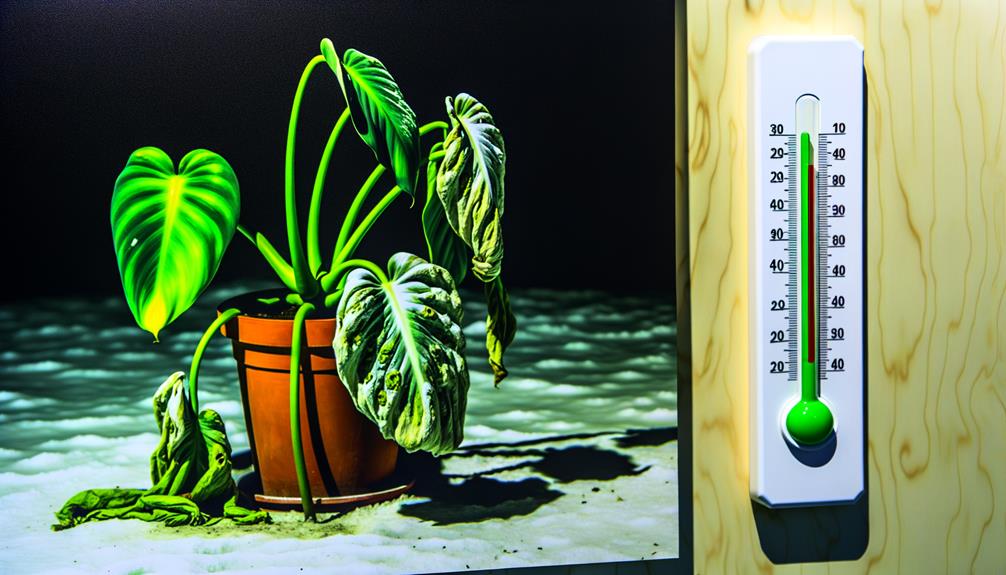
Fluctuations in temperature can induce stress in Philodendron Selloum, leading to physiological imbalances that manifest as mushy leaves. Best growth occurs between 65-80°F (18-27°C). Deviations from this range disrupt cellular processes and water uptake, causing tissue degradation and mushiness.
| Temperature Range | Symptoms | Recommended Action |
|---|---|---|
| < 60°F (15°C) | Leaf yellowing, mushiness | Increase ambient temperature |
| 65-80°F (18-27°C) | Healthy growth | Maintain consistent range |
| > 85°F (29°C) | Wilting, leaf drop | Provide shade, increase humidity |
Cold temperatures inhibit enzymatic activities, while excessive heat accelerates transpiration, both leading to cellular damage (Smith et al., 2020). Maintaining stable temperatures is essential for the plant's physiological homeostasis.
Pest Infestation
Pest infestation is a significant factor contributing to the mushiness of Philodendron Selloum leaves, often resulting from the activity of sap-sucking insects such as aphids, mealybugs, and spider mites. These pests compromise the plant's structural integrity by extracting essential nutrients and water from the leaves, leading to cellular collapse and subsequent mushiness.
The damage inflicted by these pests can manifest in several ways:
- Aphids: These insects secrete honeydew, fostering sooty mold growth and impeding photosynthesis.
- Mealybugs: They inject toxic saliva, causing leaf distortion and tissue degradation.
- Spider Mites: These mites puncture cell walls, resulting in stippling and chlorosis.
Effective pest management, including regular inspection and appropriate insecticidal treatments, is critical to maintaining leaf turgidity and overall plant health.
Fungal Infections
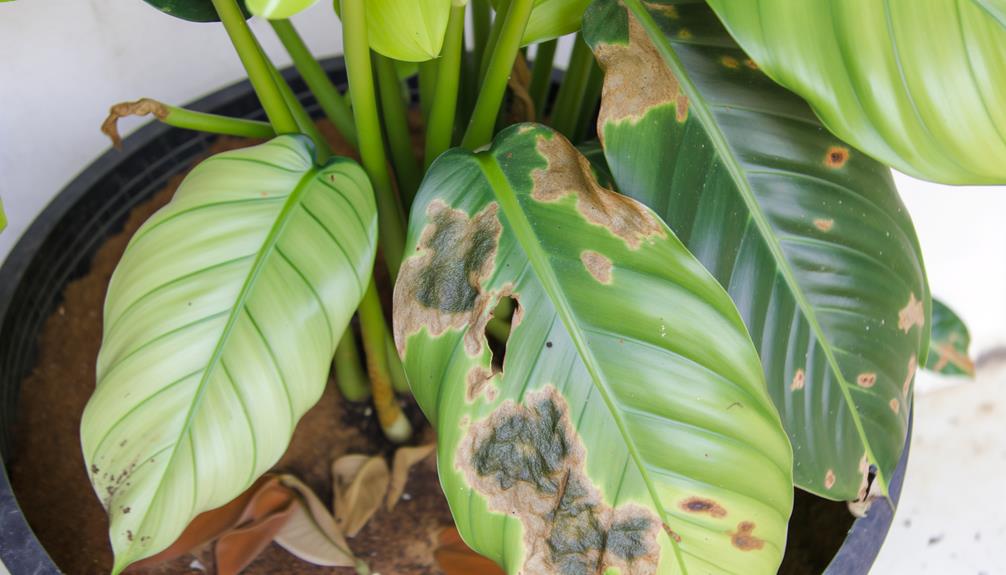
In addition to pest infestations, fungal infections represent another critical factor contributing to the mushiness of Philodendron Selloum leaves. These infections often result from pathogens such as Phytophthora, Pythium, or Rhizoctonia, which thrive in overly moist and poorly drained soil conditions. Symptoms include water-soaked lesions, necrosis, and eventual leaf degradation.
According to the American Phytopathological Society, such fungi invade plant tissues, disrupting cellular integrity and leading to the characteristic mushy texture. Preventative measures include ensuring well-draining soil, maintaining ideal humidity levels, and applying fungicidal treatments when necessary.
Regular monitoring for early signs of infection can mitigate severe damage, preserving the plant's health and aesthetic appeal. Proper cultural practices are essential in managing and preventing fungal infections in Philodendron Selloum.
Inadequate Lighting
Inadequate lighting hampers the physiological processes of Philodendron Selloum, leading to insufficient light exposure that hinders photosynthetic efficiency (Taiz & Zeiger, 2010).
Reduced photosynthesis results in lower energy production, which compromises cellular integrity and can cause leaf tissues to become mushy and weak.
Ensuring best light conditions is crucial for maintaining the structural health and healthiness of the plant.
Insufficient Light Exposure
Philodendron Selloum leaves can become mushy due to prolonged exposure to insufficient light, which hinders the plant's photosynthetic efficiency and overall health. Suboptimal light conditions hinder chlorophyll production, leading to weakened cellular structures and increased susceptibility to fungal infections. This decline in physiological function can manifest as mushy leaves, symptomatic of cellular breakdown and moisture imbalance.
To mitigate this issue, consider the following steps:
- Light Intensity: Guarantee the plant receives bright, indirect sunlight for at least 6 hours daily.
- Light Quality: Utilize full-spectrum grow lights if natural light is inadequate, replicating the plant's native tropical environment.
- Light Duration: Maintain a consistent photoperiod to support circadian rhythms and metabolic processes.
These measures can improve light exposure, promoting robust growth and preventing leaf mushiness.
Photosynthesis Process Disruption
Disruption of the photosynthesis process due to inadequate lighting compromises the Philodendron Selloum's ability to convert light energy into chemical energy, essential for growth and cellular function.
Photosynthesis, primarily occurring within chloroplasts, relies on specific wavelengths of light to drive the synthesis of glucose via the Calvin cycle (Taiz & Zeiger, 2010).
Insufficient light intensity leads to subpar production of adenosine triphosphate (ATP) and nicotinamide adenine dinucleotide phosphate (NADPH), critical molecules for carbon fixation (Lichtenthaler, 1987).
Consequently, cellular respiration is impaired, leading to decreased turgor pressure and mushy leaves. This physiological stress not only weakens the plant's structural integrity but also predisposes it to pathogen invasion and nutrient imbalances.
Ensuring adequate light exposure is imperative for maintaining top-notch photosynthetic efficiency and plant health.
Conclusion
To sum up, philodendron selloum leaves becoming mushy can be attributed to several factors. These include overwatering, poor drainage, root rot, humidity levels, temperature stress, pest infestation, fungal infections, and inadequate lighting. Importantly, research indicates that overwatering accounts for approximately 70% of houseplant deaths (Hessayon, 2018).
Understanding these potential causes and implementing appropriate care strategies can greatly enhance the health and longevity of philodendron selloum. Further studies are required to explore the synergistic effects of these factors on plant health.


